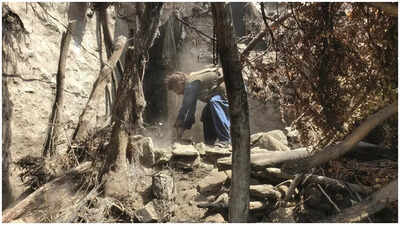ARTICLE AD BOX

The first rescue workers reached Bibi Aysha’s village more than 36 hours after an earthquake devastated settlements across eastern Afghanistan’s mountainous areas Sunday. But instead of bringing relief, the sight of them heightened her fears; not a single woman was among them.
Afghan cultural norms, enforced even in emergencies by the ruling Taliban, forbid physical contact between men and women who are not family members.In the village of Andarluckak, in Kunar province, the emergency team hurriedly carried out wounded men and children, and treated their wounds, said Aysha, 19. But she and other women and adolescent girls, some of them bleeding, were pushed aside.“They gathered us in one corner and forgot about us,” she said.
No one offered them help, asked what they needed or even approached them.Tahzeebullah Muhazeb, a male volunteer who traveled to Mazar Dara, also in Kunar province, said members of the allmale medical team there were hesitant to pull women out from under the rubble. Trapped and injured women were left under stones, waiting for women from other villages to reach the site and dig them out.If no male relative was present, he said, rescue workers dragged dead women out by their clothes so as not to make skin contact.
More than 2,200 people died and 3,600 others were injured in thequake, as per figures released by govt.The response to the quake has epitomised the dual standards women and girls face in Afghanistan, aid groups say, trapped both under the rubble and weight of gender discrimination. In Aysha’s village, not a single female aid worker had come as of Thursday, she said. She and her 3-year-old son had spent the past three nights out in the open. “God saved me and my son... But after that night, I understood — being a woman here means we are always the last to be seen.
”



.png)
.png)
.png)
















 5 days ago
4
5 days ago
4







 English (US) ·
English (US) ·